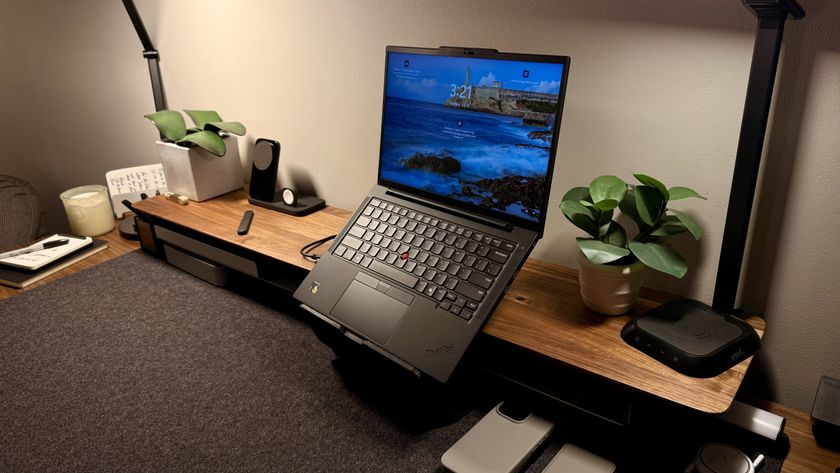Microsoft insiders say that the Windows 7 taskbar is likely to undergo significant changes as well, including long-requested features such as the ability to rearrange buttons. Achieving this is difficult – the system doesn't support it – but using an application launcher such as RocketDock can mimic some features. With this software, minimised applications appear on the dock and can be organised as you like, then relaunched with a click.
Less practically, videos could be used as desktop backgrounds in all versions of Windows 7. Try this out now with DreamRender, which supports gorgeous visualisations as well as video backgrounds. If still images are more your thing, then visit the site of Hamad Darwish, the photographer behind many of Vista's desktops, or browse the high-quality images at Interface Lift, where you'll also find some great replacement Windows icons.
Memory footprint
Windows Vista is a resource hog – there's no other way to put it. This situation might not change a great deal with Windows 7, but Microsoft will be making the system more modular, so you'll be able to unplug many Windows components to help create a more lightweight system.
If you want to do this now, then there's no tool more effective than vLite. It can create a custom Windows Vista installation DVD where anything surplus has been stripped out. Whether you want to just remove the games and Windows Mail, or you want to dispose of more fundamental components such as the SuperFetch caching system, this is the way to do it.
A simpler method is to take a look at the way that you're using memory. One way to reduce your memory footprint is to cut down the number of programs that you have running in the background. Another easy fix is to uninstall browser add-ons that you no longer use (some consume a surprising amount of RAM).
It's also worth thinking carefully before you enable any of Vista's features, because they often use a lot of memory. For example, Windows Explorer has an option to open each Explorer window as a separate process, so that if one window crashes it won't bring down the others. This sounds good, but in our tests we found that the program uses at least 10MB for every open Explorer window.
Get daily insight, inspiration and deals in your inbox
Sign up for breaking news, reviews, opinion, top tech deals, and more.
If you're worried about using up your RAM capacity, it's better to turn this feature off by clicking 'Tools | Folder Options | View', then scrolling down and unchecking the 'Launch folder windows in a separate process' box.
You may not need the Vista Aero interface either, and turning it off will save you close to 40MB of RAM. To reclaim your system's memory, right-click the desktop, select 'Personalise | Theme' and pick 'Windows Classic'.
Even the smallest tweaks can have an effect. Have you turned on the animation that causes the Windows Vista network icon to lash as data is transferred? You may not even have noticed it working in the background, but it alone can cost up to 5MB of RAM. Turn it off by right-clicking the network icon and selecting 'Turn Off Activity Animation'.
User Access
Control Fed up of 'do you really want to do this?' security prompts in Vista? Although Microsoft is planning to reduce the number of User Access Control (UAC) messages in Windows 7, you can cut the hassle down very easily now.
Start with a visit to the Norton Labs site and follow the instructions to download its free UAC tool. Run the file – accepting the default settings – and allow it to install, then right-click on the System Tray's clock and click on 'Adjust Date/Time | Change date and time' to see your shiny new UAC interface. You'll discover two huge benefits. Firstly, the Norton UAC tool is able to display exactly which program caused any particular alert.













